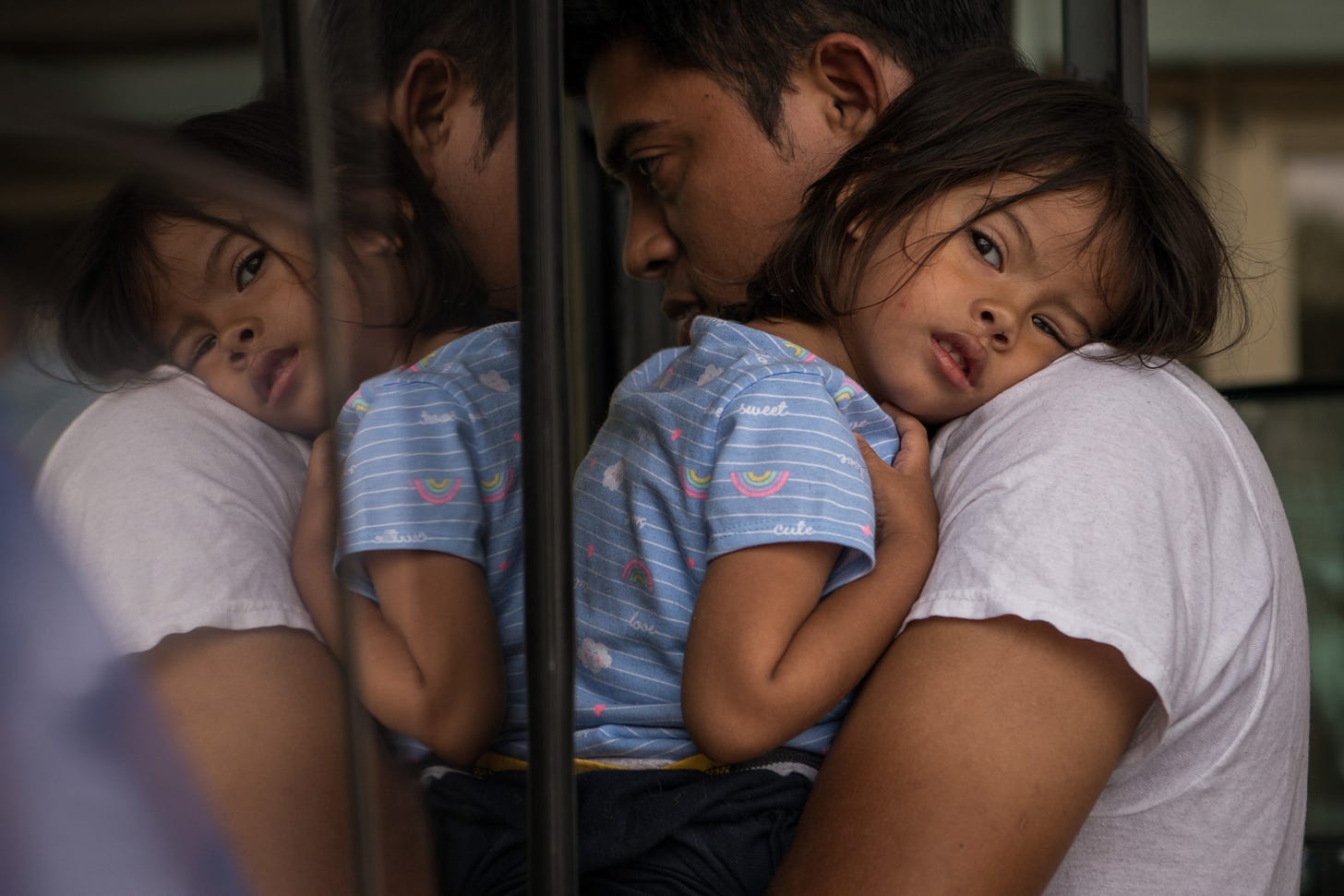The Border Crises Won’t Stop Until Our Immigration System Is Fixed
New numbers from the Biden administration show another uptick in illegal border crossings.

The number of unaccompanied migrant children has been going up steadily since President Biden took office, with numbers showing about 100,000 people were apprehended at the border in February alone—up from about 78,000 in January. News organizations are warning of a crisis in the making, and politicians and right-wing media are using the numbers to gin up opposition to immigration reform. Texas Governor Greg Abbott has already said that if COVID-19 numbers increase in the weeks ahead, new Biden administration’s migrant policies will be to blame, not his own premature lifting of restrictions on gatherings and businesses or removing the statewide mask mandate, much less his stalling of testing for migrants.
But the facts are both more complicated and heartbreaking than the numbers alone suggest. There is indeed a crisis—but one that has festered and grown for years as drug cartels, natural disasters, and poverty have driven parents to risk sending their children on the long, dangerous trip from their homes in Central America to the United States border. The Trump administration dealt with the crisis by separating children from the parents, putting families in cages while they awaited adjudication of their asylum claims, and, once the pandemic hit, turning them away at the border to wait in disease-infested camps in Mexico. The Biden administration has quickly shifted policy, but it will take time, organization, and public support to solve the problem.
When Customs and Border Patrol (CPB) apprehends minors at the border, they take them into custody and place them in CPB holding centers. These centers were never meant to hold large numbers of children for any length of time, and, by law, CPB must transfer children to shelters run by the Office of Refugee Resettlement (ORR), which is part of the Department of Health and Human Services. Not surprisingly, ORR shelters have had limited capacity due to pandemic social distancing rules, and many children end up staying in CPB custody for longer than intended, which is why ORR has set up new, larger facilities in Texas and Florida. Once children arrive at one of the more than 175 shelters for unaccompanied minors, ORR then processes them, screening for signs they may have been trafficked, and tests them for COVID and quarantining as necessary. As quickly as possible, ORR attempts to release minors into the custody of sponsors who have been vetted, including family members in the U.S. or foster homes. The average stay in ORR custody for such children now is about 31 days, but the ultimate goal is to place them with families in the U.S. while they await adjudication of their claims of asylum, which can take years because of the backlog in immigration courts.
This situation is far from ideal, even with the best intentions of the new administration. In 2014, large influxes of unaccompanied minors derailed hopes for immigration reform, and anti-immigration groups and politicians will no doubt try to use the latest numbers to scare off already nervous members of Congress from taking up any immigration bill, much less the omnibus legislation the Biden administration has proposed.
But enacting inhumane policies that simply turn vulnerable kids away can’t be the answer. Nearly a half million minors have been apprehended at the border since 2013, including 80,000 in 2019—the largest total number in a single year. Clearly, this influx of minors is not sustainable and should alarm all of us, especially those who believe we urgently need to make it easier for immigrants to come to the U.S.
As a start, we need to figure out ways to allow parents who want to protect their children from gangs and drugs to keep them safe at home. To that end, the Biden administration has proposed an authorization of $4 billion in funding as part of the Engagement in Central America program (which Richard North Patterson discussed nearby). Those funds would make money available to fight violence, corruption, drugs, gangs, and extreme poverty among other goals. But the administration has also proposed that the State Department and Department of Homeland Security work with United Nations High Commission on Refugees to establish temporary shelter and assistance in El Salvador, Guatemala, and Honduras so that those fleeing violence and extreme poverty can be protected and provided humanitarian assistance in their home countries.
We should do everything we can to keep vulnerable children from traveling thousands of miles just to be safe from predatory gangs and exploitation, but once they reach our border, we cannot simply pretend they are not our problem. They are, after all, our neighbors’ children. The countries they flee have been devastated by cartels using weapons that have crossed the border from north to south in the quest to supply Americans’ seemingly insatiable appetite for drugs. The Draconian measures put in place by the last administration did not solve the problem of child migrants. The last thing we need is for politicians to use these children as an excuse not to take up immigration reform measures that have stalled for decades.
It’s not in the nature of problems to pause and wait for a solution to be found. If we delay addressing other immigration reform issues—a more generous permanent resident program, more visas for agricultural and other temporary workers, a pathway to citizenship for DACA recipients, and legal status for undocumented immigrants who have lived here for years—until there is no crisis at the border, we simply ensure that such crises will continue to occur.
Correction, March 10, 2021, 8:30 p.m.: An earlier version of this article misstated the number of border apprehensions in January.


